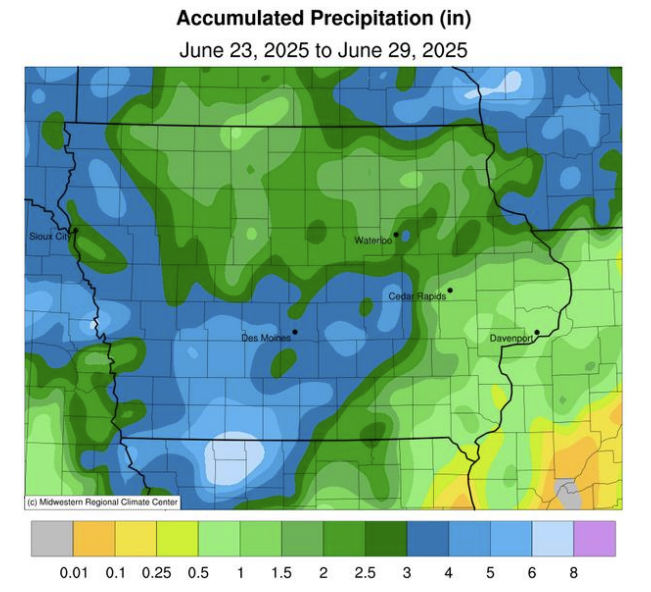Farmers in Northwest Iowa are seeing encouraging signs in their fields as corn and soybean development continues to outpace statewide averages. Despite recent rains limiting fieldwork, the region remains in a strong position heading into July.
According to the USDA’s latest Crop Progress and Condition report, 3% of Iowa’s corn crop has begun to silk, marking the transition into the next critical growth phase. While district-level silking data wasn’t specified, Northwest Iowa’s overall crop progress suggests it’s on pace or slightly ahead of the state. Soybeans are also progressing well, with 27% of the crop blooming in the region—five percentage points ahead of the statewide average of 22%.
Soil moisture levels in Northwest Iowa remain relatively balanced. Topsoil moisture is rated 76% adequate and 14% surplus, with only 1% very short and 9% short. Subsoil moisture shows a similar trend, with 78% adequate and 5% surplus, while 2% is very short and 15% short. These figures suggest slightly better moisture conditions than the statewide averages, where topsoil surplus is higher at 21%, and subsoil surplus stands at 13%.
Fieldwork has been somewhat hampered by recent precipitation. Farmers in Northwest Iowa reported 3.0 days suitable for fieldwork, just above the statewide average of 2.7 days. While the rain has helped maintain soil moisture, it has also delayed some field operations.
Statewide, corn condition is holding strong, with 85% rated good to excellent, while soybeans are slightly lower at 77% good to excellent. Although district-level condition ratings weren’t specified, Northwest Iowa’s early progress suggests crops are off to a healthy start.
With blooming underway and silking just beginning, Northwest Iowa farmers are cautiously optimistic. As July unfolds, attention will turn to pollination and continued rainfall to support the next stages of crop development.
The full report is available at the USDA’s National Agricultural Statistics Service website.
















